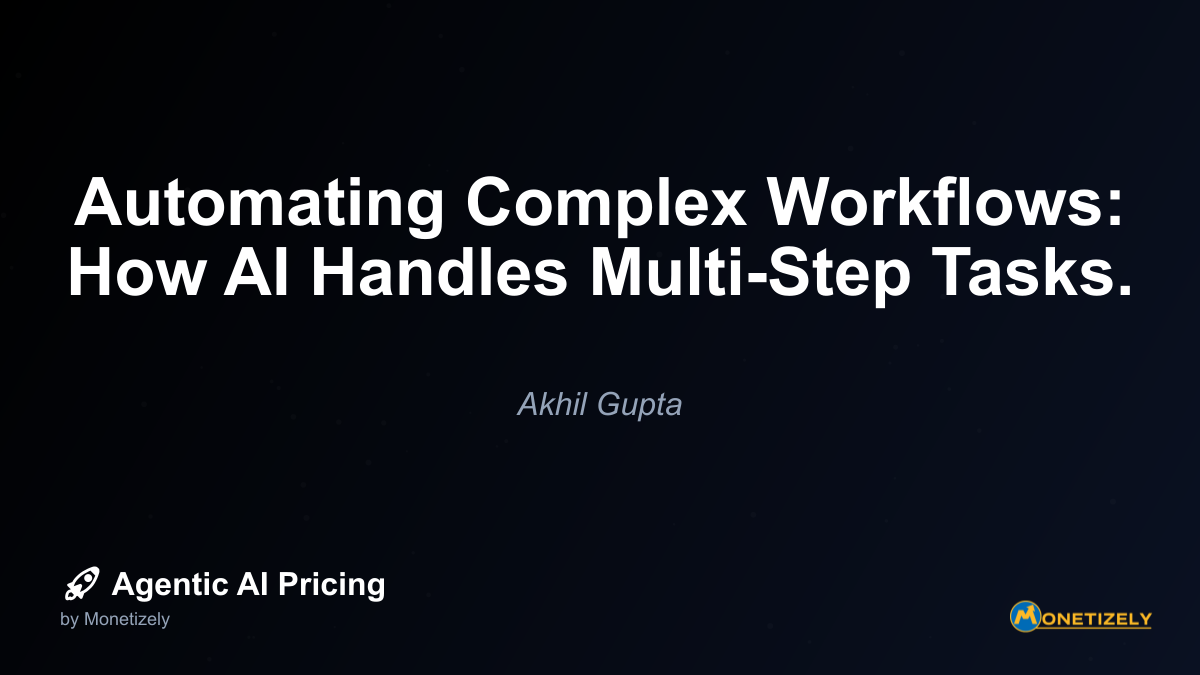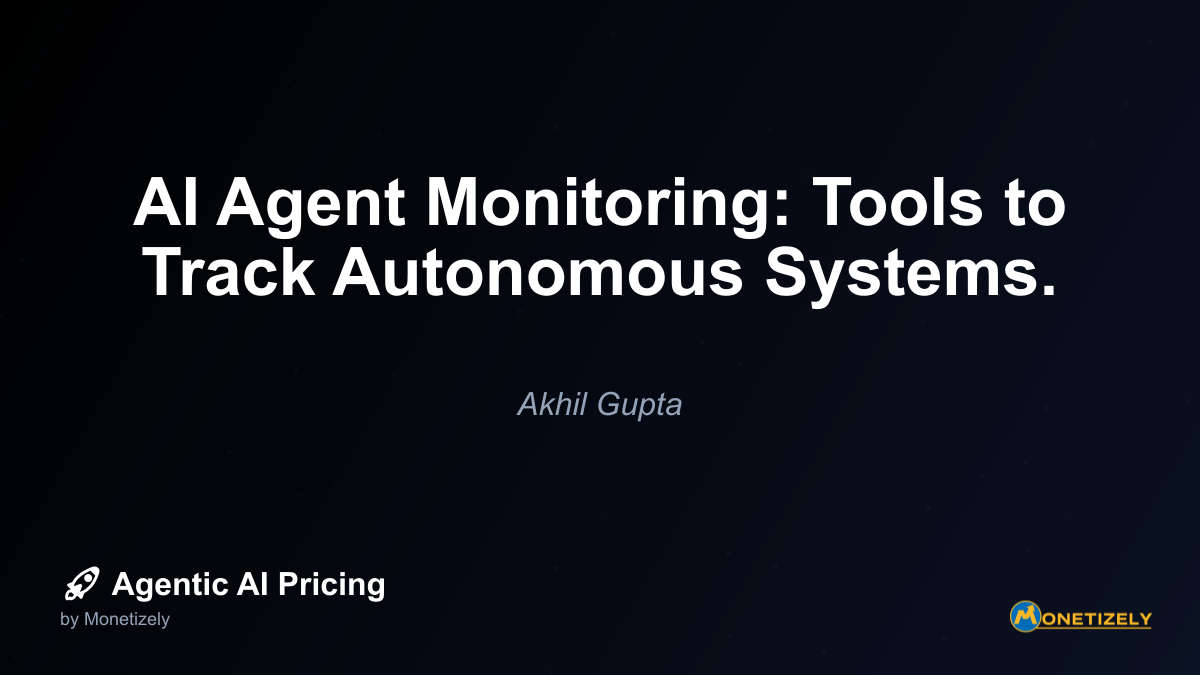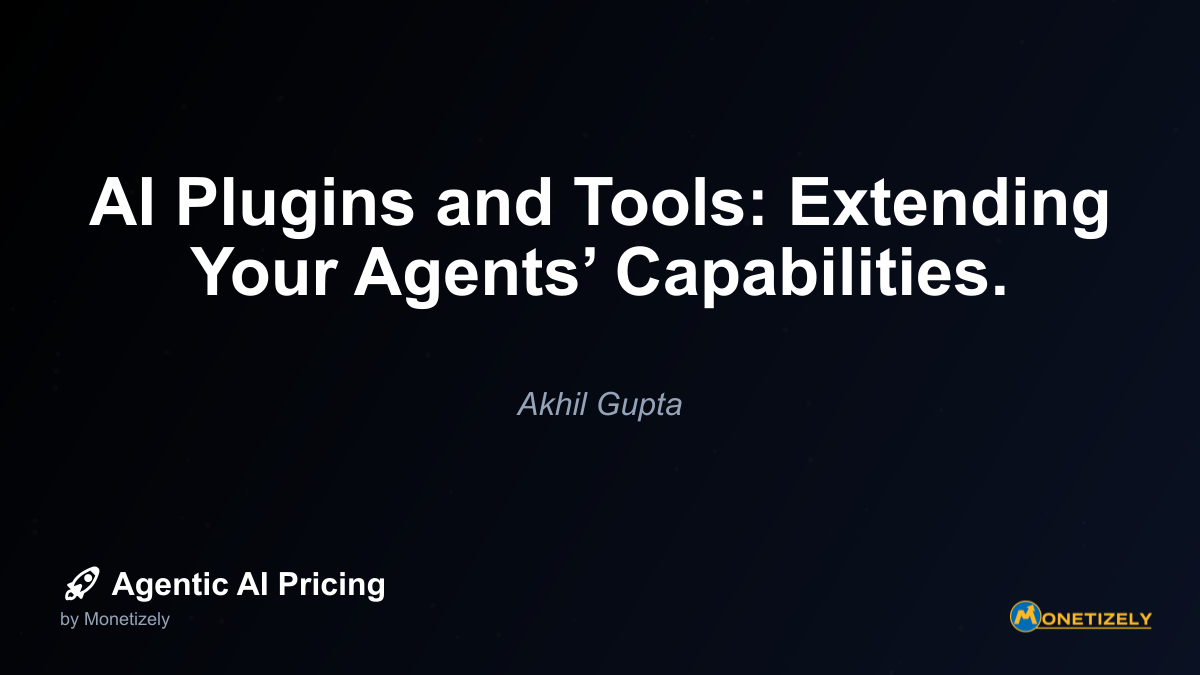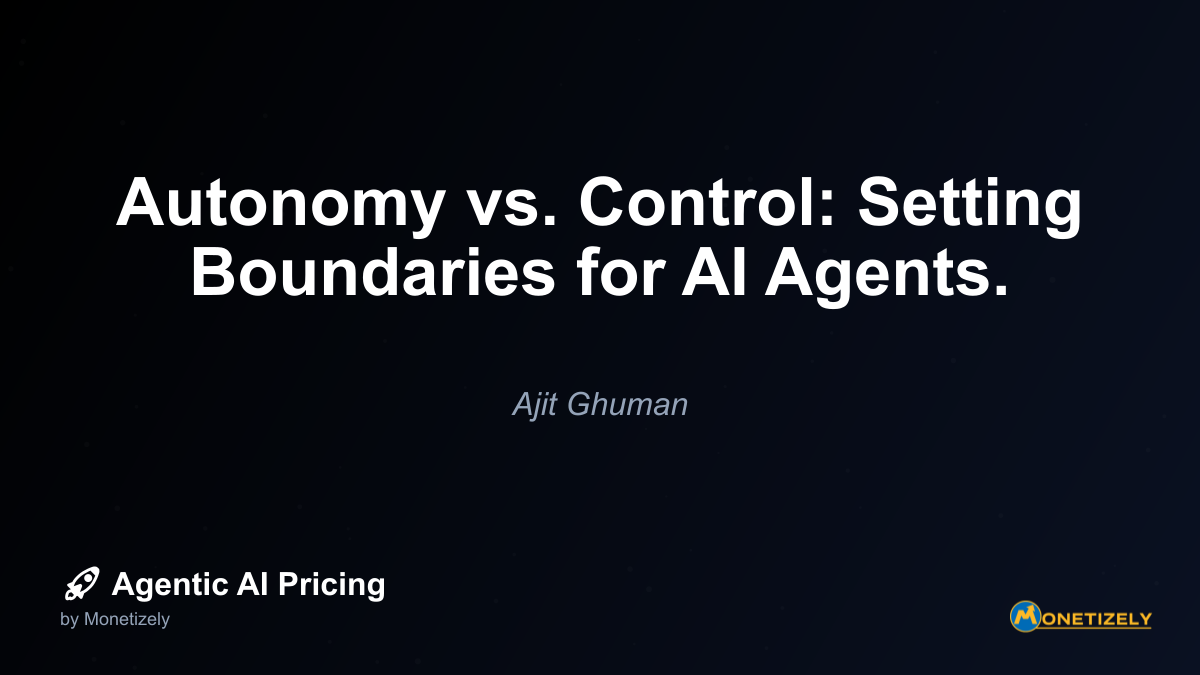· Ajit Ghuman · Technical Insights · 9 min read
Orchestrating Multiple AI Agents for Complex Goals.
AI and SaaS Pricing Masterclass
Learn the art of strategic pricing directly from industry experts. Our comprehensive course provides frameworks and methodologies for optimizing your pricing strategy in the evolving AI landscape. Earn a professional certification that can be imported directly to your LinkedIn profile.
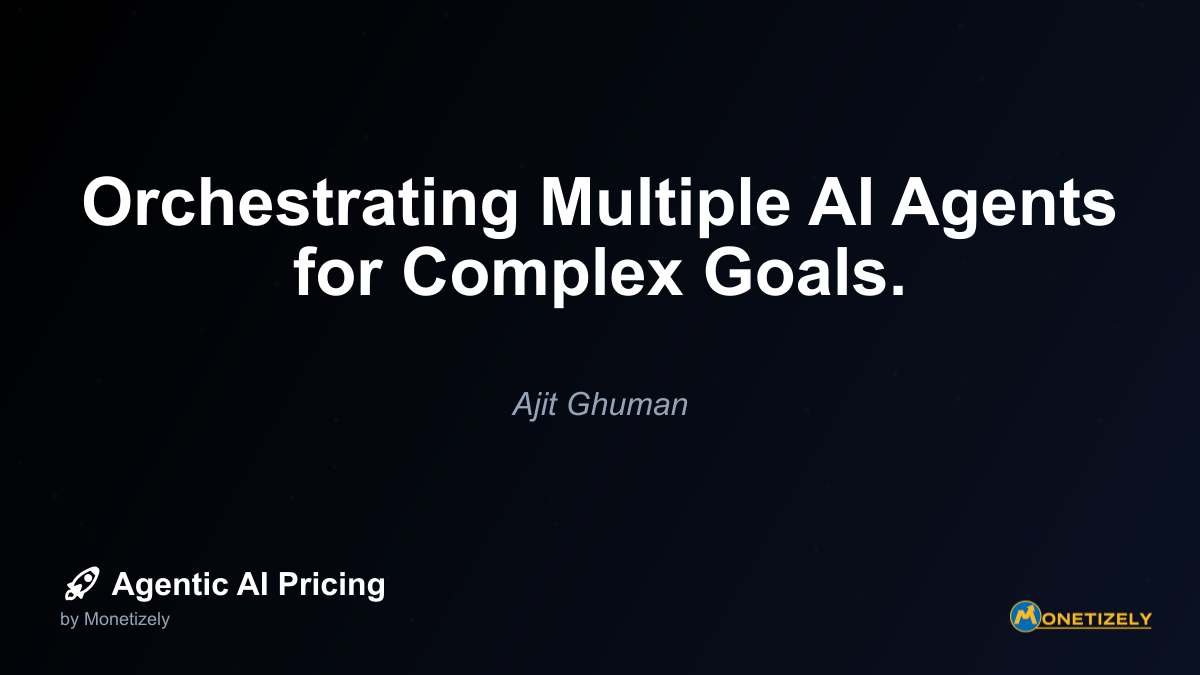
This approach offers several advantages:
- Specialization: Each agent can excel at a specific function without requiring comprehensive capabilities across all domains.
- Scalability: New agents can be added to the system as requirements evolve.
- Robustness: The failure of a single agent doesn’t necessarily compromise the entire system.
- Flexibility: Different combinations of agents can be deployed depending on the specific challenge.
In the context of agentic AI, these systems represent a significant advancement in how artificial intelligence can tackle problems that were previously too complex for single-agent approaches.
Understanding Multi-Agent Architectures
At its core, a multi-agent system consists of several key components working in harmony:
1. Specialized Agents
Each agent in the system is designed with specific capabilities and responsibilities. Common agent types include:
- Planner Agents: Responsible for breaking down complex goals into manageable sub-tasks
- Research Agents: Gather and analyze information relevant to the objective
- Execution Agents: Carry out specific actions based on instructions
- Monitoring Agents: Track progress and identify potential issues
- Coordination Agents: Manage communication and resource allocation between agents
2. Communication Protocols
For a multi-agent system to function effectively, agents need standardized ways to exchange information. These protocols define:
- Message formats and structures
- Communication channels
- Information exchange timing
- Error handling procedures
- Security and authentication measures
3. Coordination Mechanisms
Coordination ensures that individual agent actions align with the overall system goals. Common approaches include:
- Hierarchical Structures: Where “manager” agents delegate tasks to “worker” agents
- Market-Based Systems: Where agents bid for tasks or resources
- Consensus Algorithms: Where agents collectively decide on actions
- Shared Knowledge Bases: Where agents contribute to and draw from common information repositories
4. Orchestration Layer
The orchestration layer serves as the conductor for the multi-agent symphony. It typically handles:
- Task allocation and scheduling
- Resource management
- Conflict resolution
- Progress monitoring
- System-wide optimization
How Multi-Agent Systems Tackle Complex Goals
To understand how multi-agent systems operate in practice, consider a content marketing agency using AI to create comprehensive marketing campaigns:
Goal Definition: A human sets the objective: “Create a multi-channel marketing campaign for a new product launch.”
Task Decomposition: A planner agent breaks this down into sub-tasks:
- Research target audience
- Develop messaging strategy
- Create content for different channels
- Design distribution schedule
- Establish success metrics
Agent Allocation: The orchestration layer assigns specialized agents to each sub-task:
- Market research agent analyzes customer data and competitor positioning
- Messaging agent develops key themes and value propositions
- Content creation agents (specialized for different formats) produce blog posts, social media content, email sequences, etc.
- Analytics agent develops KPI framework and tracking mechanisms
Execution and Coordination: As agents work on their assigned tasks, they communicate progress and share information:
- The market research agent shares audience insights with the messaging agent
- The messaging agent provides approved themes to the content creation agents
- The content creation agents coordinate to ensure consistent messaging across channels
Monitoring and Adaptation: Throughout the process, monitoring agents track progress and identify issues:
- If a content piece doesn’t align with brand guidelines, it’s flagged for revision
- If new market information emerges, strategies can be adjusted
- Resources can be reallocated based on changing priorities
Integration and Delivery: Finally, the outputs from various agents are combined into a cohesive campaign ready for human review and implementation.
This example illustrates how multiple specialized agents can collaborate on a complex task that would be difficult for a single agent to handle effectively.
Popular Multi-Agent Frameworks and Architectures
Several frameworks have emerged to facilitate the development and deployment of multi-agent systems:
AutoGen
Developed by Microsoft Research, AutoGen provides a framework for building applications with multiple conversational agents that can collaborate to solve complex tasks. It emphasizes:
- Flexible conversation patterns between agents
- Customizable agent capabilities
- Human-in-the-loop integration
- Multi-modal information processing
LangGraph
Built on top of LangChain, LangGraph offers a structured approach to creating multi-agent systems with:
- Graph-based agent interaction modeling
- State management across agent conversations
- Conditional flows between agents
- Built-in debugging and visualization tools
CrewAI
CrewAI focuses on creating “crews” of specialized agents that can work together on complex tasks with:
- Role-based agent definition
- Task planning and delegation
- Sequential and parallel execution options
- Process monitoring and management
CAMEL (Communicative Agents for Mind Exploration)
CAMEL provides a framework specifically designed for creating agents that can effectively communicate and collaborate through:
- Role-playing mechanisms
- Structured dialogue formats
- Goal-oriented interactions
- Self-refinement capabilities
Custom Architectures
Many organizations build custom multi-agent architectures tailored to their specific needs, often incorporating:
- Domain-specific agent capabilities
- Proprietary coordination mechanisms
- Integration with existing systems
- Specialized security and governance features
Communication Patterns in Multi-Agent Systems
Effective communication is the foundation of successful multi-agent systems. Several patterns have emerged as particularly effective:
1. Hierarchical Communication
In this pattern, agents are organized in a tree-like structure:
- Top-level agents break down tasks and delegate to subordinate agents
- Mid-level agents may further decompose tasks for more specialized agents
- Information flows up and down the hierarchy
- Clear lines of responsibility and authority exist
This approach works well for complex tasks with clear sub-components and when centralized control is desirable.
2. Peer-to-Peer Communication
In peer-to-peer systems:
- Agents communicate directly with each other as needed
- No central coordinator is required
- Each agent makes autonomous decisions
- The system is highly resilient to individual agent failures
This pattern excels in dynamic environments where flexibility and adaptability are crucial.
3. Blackboard Systems
In blackboard-based communication:
- A shared “blackboard” serves as a common knowledge repository
- Agents post information and read updates from others
- Coordination happens implicitly through the shared space
- Multiple agents can contribute to solving parts of a problem
This approach works well when multiple perspectives on a problem are valuable and when the solution path isn’t known in advance.
4. Market-Based Communication
In market-based systems:
- Tasks are presented as “contracts” to be fulfilled
- Agents bid based on their capabilities and availability
- Resources are allocated through auction mechanisms
- Performance incentives can be built into the system
This pattern is effective for resource allocation problems and when agent capabilities overlap.
Challenges in Multi-Agent Orchestration
While multi-agent systems offer powerful capabilities, they also present significant challenges:
1. Coordination Complexity
As the number of agents increases, coordination becomes exponentially more complex. Issues include:
- Ensuring all agents have necessary information
- Preventing conflicting actions
- Managing dependencies between tasks
- Balancing workloads effectively
2. Communication Overhead
Multi-agent systems can generate substantial communication traffic, leading to:
- Increased latency
- Higher operational costs
- Potential bottlenecks
- Greater risk of communication failures
3. Consistency and Coherence
Maintaining consistency across multiple agents requires:
- Shared understanding of goals and constraints
- Compatible knowledge representations
- Agreed-upon standards and protocols
- Mechanisms for resolving contradictions
4. Error Propagation
Errors in one agent can cascade through the system:
- Misinformation can spread to other agents
- Faulty planning can lead to wasted effort
- Coordination failures can result in deadlocks
- Recovery mechanisms must be robust
5. Security and Trust
Multi-agent systems introduce unique security challenges:
- Authentication between agents
- Protection of sensitive information
- Prevention of malicious agent behavior
- Maintaining system integrity
Best Practices for Multi-Agent Orchestration
Based on industry experience and research, several best practices have emerged for designing effective multi-agent systems:
1. Start with Clear Goal Definition
Before designing the system:
- Precisely define the overall objective
- Establish success criteria
- Identify constraints and requirements
- Determine evaluation metrics
2. Design for Observability
Build comprehensive monitoring into the system:
- Track agent actions and decisions
- Monitor inter-agent communications
- Measure progress toward goals
- Identify bottlenecks and failures
3. Implement Robust Error Handling
Prepare for inevitable failures:
- Design agents to gracefully handle unexpected inputs
- Create fallback mechanisms for agent failures
- Implement circuit breakers to prevent cascading issues
- Provide human escalation paths for critical problems
4. Balance Autonomy and Control
Strike the right balance between agent independence and system oversight:
- Allow agents to make decisions within their domains
- Establish clear boundaries for agent authority
- Create mechanisms for intervention when needed
- Design for appropriate human oversight
5. Start Simple and Scale Gradually
Begin with a minimal viable system:
- Start with fewer, more general agents
- Add specialization as needs become clear
- Increase autonomy as confidence grows
- Expand capabilities based on real-world performance
Real-World Applications of Multi-Agent Systems
Multi-agent orchestration is already delivering value across numerous industries:
Customer Service
Modern customer service platforms use multi-agent systems to:
- Route inquiries to appropriate specialists
- Gather relevant customer information
- Generate personalized responses
- Escalate complex issues to human agents
- Follow up on resolution status
Content Creation
Media companies leverage multi-agent systems for:
- Research and fact-checking
- Content planning and outlining
- Draft generation across formats
- Editing and quality assurance
- Distribution and promotion
Software Development
Development teams employ multi-agent systems for:
- Requirements analysis and specification
- Code generation and documentation
- Testing and quality assurance
- Deployment and monitoring
- Maintenance and updates
Financial Services
Financial institutions use multi-agent systems for:
- Risk assessment and fraud detection
- Portfolio management and optimization
- Regulatory compliance monitoring
- Market analysis and prediction
- Customer financial planning
Healthcare
Healthcare providers implement multi-agent systems for:
- Patient data analysis
- Treatment planning
- Medical research assistance
- Resource allocation
- Remote monitoring and care
The Future of Multi-Agent Orchestration
As AI technology continues to evolve, we can expect several emerging trends in multi-agent systems:
1. Increased Autonomy
Future systems will feature greater agent independence:
- Self-organizing agent teams
- Dynamic role assignment
- Autonomous goal refinement
- Self-improvement through experience
2. Advanced Collaboration Models
New approaches to agent collaboration will emerge:
- Sophisticated negotiation protocols
- Emotion-aware communication
- Cultural and contextual adaptation
- Collective intelligence optimization
3. Human-Agent Teaming
The boundary between human and AI work will become more fluid:
- Seamless handoffs between humans and agents
- Intuitive interfaces for human guidance
- Adaptive automation based on human state
- Collaborative problem-solving approaches
4. Ecosystem Interoperability
Multi-agent systems will increasingly work across organizational boundaries:
- Standardized agent interfaces
- Secure cross-system communication
- Marketplace models for agent services
- Federated learning and knowledge sharing
5. Ethical and Responsible Design
As capabilities grow, so will the focus on responsible implementation:
- Transparent decision-making processes
- Fairness-aware resource allocation
- Privacy-preserving information sharing
- Accountability mechanisms for agent actions
Getting Started with Multi-Agent Orchestration
For organizations looking to implement multi-agent systems, consider this roadmap:
1. Identify Suitable Use Cases
Look for problems with these characteristics:
- Naturally decomposable into sub-tasks
- Requiring diverse capabilities
- Involving information from multiple sources
- Benefiting from parallel processing
2. Choose an Appropriate Framework
Select a framework based on your specific needs:
- Consider existing infrastructure compatibility
- Evaluate scalability requirements
- Assess customization capabilities
- Review community support and documentation
3. Start with a Minimum Viable System
Begin with a simplified implementation:
- Focus on core functionality
- Limit initial agent types and interactions
- Establish clear evaluation metrics
- Plan for iterative improvement
4. Implement Strong Governance
Establish oversight mechanisms from the start:
- Define clear roles and responsibilities
- Create audit trails for agent actions
- Establish intervention protocols
- Design regular review processes
5. Measure and Optimize
Continuously improve based on real-world performance:
- Track key performance indicators
- Analyze bottlenecks and failures
- Gather user feedback
- Iterate on agent capabilities and interactions
Conclusion
Multi-agent orchestration represents a powerful approach to solving complex problems that exceed the capabilities of single AI systems. By breaking down challenges into manageable components and leveraging specialized agents working in concert, organizations can tackle increasingly sophisticated tasks while maintaining flexibility and scalability.
As frameworks mature and best practices evolve, we can expect multi-agent systems to become a standard part of the AI toolkit across industries. Organizations that invest in understanding and implementing these approaches now will be well-positioned to leverage their benefits as the technology continues to advance.
The journey toward effective multi-agent orchestration requires thoughtful design, careful implementation, and continuous refinement. But for those willing to embrace this approach, the potential rewards—in terms of capability, flexibility, and scalability—make it a compelling path forward in the evolution of artificial intelligence.
For businesses exploring agentic AI adoption, understanding the orchestration of multiple agents is increasingly becoming not just a technical consideration but a strategic imperative that directly impacts how these systems can be effectively deployed and monetized in real-world applications.
Co-Founder & CEO
Ajit is the author of Price To Scale, a top book on SaaS Pricing and is the Founder of Monetizely. Ajit has led and worked in pricing and product marketing at firms like Twilio, Narvar and Medallia. His work has been featured in Forbes and VentureBeat. Ajit regularly consults with software companies from Seed stage to post-IPO on pricing strategy. Ajit is also a highly-rated co-instructor for 'The Art of SaaS Pricing and Monetization' on Maven.
Pricing Strategy Audit
Let our experts analyze your current pricing strategy and identify opportunities for improvement. Our data-driven assessment will help you unlock untapped revenue potential and optimize your AI pricing approach.

